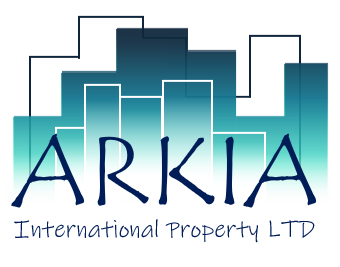Many indicators are in the green for real estate companies, foundations and funds. The market is still waiting for clear signals on the macroeconomic front.

After a very dark red 2022, 2023 is hoping for green. Since the beginning of the year, the trend has been towards stabilization. The SWIIT (SXI Real Estate Funds Index) has regained some of the ground lost last year in a highly volatile environment – and is set to remain so. At the end of May, the index had gained 1.24% since the beginning of the year. The market is wavering between solid fundamentals and a macroeconomic environment still marked by persistent inflation and rising interest rates.
The Swiss real estate market remains characterized by a persistent imbalance between supply and demand. While construction activity is declining, the need for housing remains high, fuelled by immigration and a tight job market. As a result, the vacancy rate continues to fall, according to data supplied by real estate funds and companies. With the end of negative interest rates, yield properties have lost some of their appeal. According to CIFI data, price rises slowed in the first quarter. However, the impact of rising interest rates remains limited, although it is gradually being factored into valuations. It is also interesting to note that commercial real estate continues to hold up well, despite the doom that was predicted for it at the end of the pandemic due to expected societal changes, such as telecommuting.
NORMALIZATION OF AGIOS
So – and this was the good news of 2022 – indirect real estate can count on solid fundamentals while awaiting a normalization of the situation on the inflation and interest rate fronts. Last year’s 15% decline in the index was, in fact, essentially due to a massive loss of interest on the part of investors, who were reluctant to pay a premium for this asset class during a period of monetary tightening. After reaching stratospheric levels of over 45%, agios fell well below their historic average (23%) at the beginning of the year to around 15%.
Indirect real estate should still benefit from a head start over 10-year Swiss government bonds, listed real estate’s main competitors in portfolios.
In addition to this improvement in valuations, the good news is that net asset values (NAVs) have held up well, and have not collapsed. As the majority of properties are valued using the Discounted Cash Flow (DCF) method, which estimates the current value of a property by discounting future cash flows (rents), the situation could have been tricky, as the value of a property falls while interest rates rise. However, discount rates proved to be comprehensive.
DIVIDENDS ON THE RISE
As for dividends, they should be around 3% this year. This spring, at the end of the earnings season for real estate companies and funds, they showed a slight upward trend. In particular, they can count on increases in the reference mortgage rate set by the Swiss Confederation – now at 1.5% – and thus the possibility of seeing rents adapt to rising interest rates and the cost of living. At present, almost one in two rental contracts in Switzerland is signed on the basis of the 1.25% reference rate that prevailed until the beginning of June.
Indirect real estate should therefore continue to enjoy a head start over 10-year Swiss government bonds, the main competitors of listed real estate in portfolios. Yields on Swiss benchmark bonds were well below 1% at the end of May, following a highly volatile month. As the end of this interest-rate cycle approaches, these yields, which tend to fluctuate in line with inflation expectations and economic forecasts, should stabilize below 2%.
WALTZ-HESITATION
More reasonable valuations, uncompetitive government bond yields, solid fundamentals: one after another, the lights are turning green for indirect real estate. But the market continues to waltz. A glance at the primary market confirms the restraint of the players. Overall, the results for vehicles having carried out a capital increase are rather mixed this year, even if activity picked up somewhat in May. It’s true that the market also had to contend with the uncertainties linked to the announcement of the takeover of Credit Suisse by UBS, a merger that will create the most important player in the Swiss indirect real estate market.
The fundamentals of the Swiss real estate market should continue to counterbalance the effects of rising interest rates in this uncertain environment. For both male and female investors, the quest for quality is essential, not least to secure income. A glance at the performance of the various investment vehicles since the start of the year shows a slight advantage for real estate funds. Real estate companies, which are less sensitive to interest rates, lost their lead after a sharp decline in May. Despite the risks of a one-off market consolidation, this asset class should continue to do well and play its part in a diversified portfolio.
BCV is a universal bank that has been present in the canton of Vaud since 1845. It is particularly active in institutional asset management in Switzerland. It offers its expertise in the form of tailor-made mandates, advisory services and investment funds covering all major asset classes for institutional and private clients.
